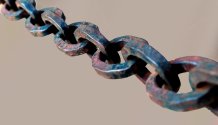I have written several blogs about problematic parts of the lineal system of stuff: mining of recources, the production of stuff and the end of the line, waste.
The problems in all of these parts would not have been this big, if we would have had the same way of dealing with stuff as we did in the 30s. Stuff was made to last and to be repaired if broken. People had the stuff they needed and were satisfied with that.
Looking at the way people handled stuff in the 30s makes me wonder how we ended up in this consumer society. Some of the driving forces are mentioned in The Story of Stuff. I want to explore these further.
Economy of never ending growth
When the great recession hit in the 30s, there were no easy ways to calculate how the economy of a country was doing. Some distinguished economists came up with the Gross National Product (GNP). A country would be economically vital as long as the GNP would rise. Nowadays we live, in general, in prosperity in the Netherlands. But this idea of growth is still there. Politicians and economists hold on to the idea of never ending growth to ensure jobs and keep the economy running. But how can we run a never ending growth economy on a finite planet?
Planned Obsolescence
One of the solutions to let the economy grow, was to increase the production of stuff. And this stuff had to be sold. A plan came up in Europe in the 30s to make Planned Obsolescence mandatory: making the designs of products worse, so people would need to buy a new one sooner. The documentary The Light Bulb Conspiracy explains how this works.
In the end the planned obsolescence was not introduced by government. That was a step to far. But it found its way to the business sector anyways. All products are designed to fail in time, from printer to mixer, from refrigerator to phone. Printers are know to stop working after a standard X amount of prints. This is programmed into a chip. And Apple had to pay 25 million in February 2020, because they deliberately slowed old phones when a new phone came on the market. They said they did this to save the battery from failing, as it was not able to process the new updates.
Perceived Obsolescence
In America in the 50s a new form of planned obsolescence found its way to the market. A successful business man, Brooks Stevens, explained his vision: "instilling in the buyer the desire to own something a little newer, a little better, a little sooner than is necessary".
This kind of planned obsolescence is not about making a product fail as soon as possible, but making a product out dated as soon as possible. Very effective, because people want to fit in. These days you cannot walk around anymore with the old-fashioned ear plugs, for instance. This is one of the reasons people like gadgets: it makes them cool and fit in. Clothes are also quicker and quicker out dated. And home styling changes fast. All to make us buy new stuff.
Along side the growth economy, planned and perceived obsolescence, these mechanisms stimulate the consumer society. And it is moving fast like a train without a railroad engineer.
Connecting
Businesses will use as many techniques as they can find to sell more and more stuff. Like making accessories that do not fit on products of your competitor. Or making sure small parts cannot be replaced on its own (and need replacing of a big part of the product). Along side the growth economy, planned and perceived obsolescence, these mechanisms stimulate the consumer society. And it is moving fast like a train without a railroad engineer. The circular economy wants to change this system to make a sustainable future possible.


0 Comments: